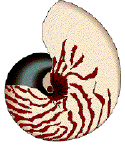

Goals:
1. Students will use various methods of cleaning up oil spills to determine the most effective method.
2. Students will work effectively with each other to solve a complex problem.
Resources:
1. Internet access.
2. Information on the cause of oil spills. See http://www.itopf.coin/stats.html
3. "Investigating Oil Spills Lab" worksheet.
4. Experiment materials.
a. Several translucent containers
b. Water
c. Cooking oil * Other types of oil may be substituted for this experiment' however, other types of oil may not be environmentally safe to use or to dispose of.
d. Blue food coloring
e. 1/4 cup measuring cup
f. Paper towels
g. Fabric
h. Coffee filters
i. String
j. Sponges
h. Scrap construction paper
i. Various brands of detergent
Time:
Approximately 2 hours. Time includes: introduction, set up, experiment' clean up, and follow up discussion.
Procedure:
Background Information
Millions of barrels of oil are shipped in seagoing vessels such as supertankers. Incidents relating to spillage and ultimately the contamination of water ecosystems have periodically occurred over the last few centuries. When an unnatural catastrophe like this occurs, it often proves detrimental to plant and animal life.
We have developed several techniques for cleaning up oil spills. For instance, chemicals are often used to break down oil molecules. Also, since oil is less dense than water and floats on the surface, skimming and vacuuming apparatus are utilized. In the evident of a widespread oil spill, we have to be prepared to clean every stone along an oil-covered shore. It is not uncommon at such times of disaster for members of animal protection organizations to gather hurt and for contaminated animals, such as birds and sea otters, to help them move and eat. Unfortunately, large numbers of animals perish during the disasters such as this. Gills of fish get clogged, obstructing the flow of dissolved oxygen necessary for their survival. Sunlight is blocked, and green plankton and plants requiring this energy for photosynthesis die. As a result, the food supply for many other consumers along the food chain is reduced. (Cross, William K.)
Cause of Spills:
Most incidents are the result of a combination of actions and circumstances, all of which contribute in varying degrees to the final outcome. The following analysis explores the incidence of spills of different sizes in terms of the primary event or operation in progress at the time of the spill. These "causes" have been grouped into "Operations" and "Accidents". Spills for which the relevant information is not available or where the cause was not one of those given are listed under "Other".
It is apparent from the table that:
- most spills from tankers result from routine operations such as loading, discharging and bunkering which normally occur in ports or at oil terminals.
- the majority of these operational spills are small, with some 93% involving quantities of less than 7 tons.
- accidents involving collisions and grounding generally give rise to much larger spills, with a fifth involving quantities in excess of 700 tons. (http://www.itopf.com/stats.html)
Step 1 - Divide students into teams of 5.
Step 2 - Explain to terms that their task is to clean up an oil spill using the materials provided for them.
Step 3 - Each team will fill a translucent container half filled with water, a drop of blue food coloring, and measure 1/4 cup of cooking oil to put in the container.
Step 4 - Students will observe that oil is less dense than the water.
Step 5 - Students will shake containers slightly to produce waves or currents.
Step 6 - Students will observe what happens and record data on experiment worksheet.
Step 7 - Students will hypothesize what results are likely to occur with each clean up method and record this information.
Step 8 - Students will experiment by attempting to clean up a simulated oil spill, using different materials which have been provided. (Follow the order of materials on the Lab Worksheet)
Step 9 - Students will observe different results and record the results on the experiment worksheet.
Step 10 - Students will brainstorm other materials that may be used effectively to clean up the oil.
Step 11 - Students will brainstorm the most cost effective method to cleaning up their oil spill.
Step 12 - Students will record all information on the lab worksheet.
Assessment:
1. Each team member must complete the "Investigating Oil Spills Lab" worksheet.
2. Each team member will assess himself or herself in accordance with "Self-Assessment Rubric."
3. Each team will be evaluated in accordance with "Team Participation Rubric."
Curricular Strands and Major Concepts:
1. Language Arts- communication, collaborative work, information processing.
2. Mathematics- measurement, estimating.
3. Science- experimenting, hypothesizing.
4. Social Studies- economics.
Possible Extensions:
To alter this lesson for a lower grade level, have the materials present at each station for the teams. The experiment can be done so that each team presents to the class one way of experimentation to remove the oil from the water. As a class, the-students can decide the answers to the questions on the worksheet.
Bibliography:
Cross, William K. Endangered Species. California: Teacher Created Materials, l994. http://www.itopf.com/stats.html